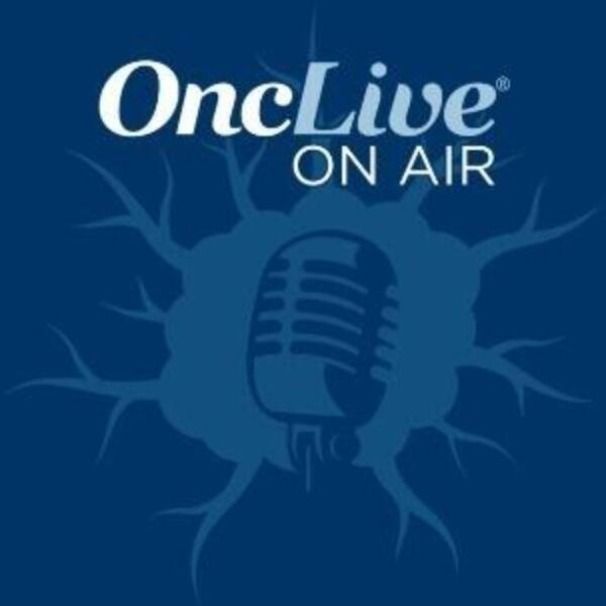Article
Bispecific Monoclonal Antibodies Lead Immune-Directed Therapies into the Future
Author(s):
Increases investigative efforts into bispecific monoclonal antibodies could lead to their availability to treat a broad range of hematologic and solid cancers. Their current use in practice is limited to non–small cell lung cancer, leukemia, and hemophilia.
Steven T. Rosen, MD

Bispecific monoclonal antibodies have begun to step out as a treatment of interest across malignancies, but thus far their use in practice is limited to non–small cell lung cancer (NSCLC), leukemia, and hemophilia. However, that may soon change as investigative efforts into these agents is increasing rapidly and they soon may be available to treat a broad range of hematologic and solid cancers, said Steven T. Rosen, MD, during the Giants of Cancer Care Lecture® at the Bisp®.
“The future is going to be very complex [and challenging] for all of us,” Rosen, the 2021 Giants of Cancer Care® award winner for lymphoma said. “Already we see the spectrum of bispecifics…being developed for blood cancers and solid tumors. How to adequately study them [and] how to decide which [is the] better [treatment option for our patients] is going to be truly challenging. But the science is there for us to rapidly develop these products.”
Three FDA-approved bispecific monoclonal antibodies are available: blinatumomab (Blincyto), which targets CD19 and CD3 in patients with acute B‑cell lymphoblastic leukemia; amivantamab-vmjw (Rybrevant), which targets EGF and MET receptors in adults with NSCLC; and emicizumab-kxwh (Hemlibra) for patients with hemophilia.
During his presentation, Rosen discussed the evolving role of bispecific monoclonal antibodies as treatments for patients with lymphomas and how they stack up against chimeric antigen receptor (CAR) T-cell therapies. Rosen is provost and chief scientific officer, director of the Comprehensive Cancer Center and Beckman Research Institute, and the Irell & Manella Cancer Center Director’s Distinguished Chair at City of Hope in Duarte, California.
Expanding Treatment Options
Though mechanisms of action range across bispecific monoclonal antibodies, the standard construct consists of 2 binding site directed at different targets.1 “First [comes] the engagement of the immune cells to the tumor,” Rosen said. “The antibody binds to the [natural] killer cell and binds to the tumor. The second [step] is targeted delivery of the payload where it actually binds to a toxin and brings it into the tumor or binding.”
Investigators are evaluating dozens of bispecific monoclonal antibodies, 5 of which have data reported. These include odronextamab (REGN1979), mosunetuzumab (RG7828), glofitamab (RG6026), plamotamab, and epcoritamab. Similar to blinatumomab, these agents target CD20 and CD3.
Odronextamab is an IgG4-based construct. Mosunetuzumab and epcoritamab are IgG1 based and glofitamab is IgG based. Plamotamab has no FcyR binding. All 5 agents are administered intravenously or subcutaneously.
Data collected so far show that all these agents produce impressive rates of overall response and/or complete response, some of which are comparable to approved CAR T-cell therapies. Furthermore, they do so without high rates of grade 3 or greater cytokine release syndrome (CRS), an adverse event common to CAR T-cell therapy and antibody therapeutics.
Bispecific Monoclonal Antibodies Offer Some Advantages Over CAR T Cells
Both CAR T-cell therapies and bispecific monoclonal antibodies activate the immune system to attack cancers. CAR T cells have a long, well-documented track record of improving outcomes and even inducing cures in some patients with hematologic malignancies. Furthermore, although CAR T cells are usually administered in the in-patient setting, these agents require a single application. The biggest advantage CAR T cells have at the moment is the number of FDA approved treatments available, Rosen said, noting that a majority of bispecific monoclonal antibodies are investigational.
Despite the availability, there are limiting factors for CAR T-cell therapy.2 “CAR T cells require processing,” Rosen said. “[Patients need to undergo leukapheresis, [then] there’s several weeks of getting the product prepared.” He added that sometimes it can be difficult to harvest CAR T cells for treatment. “The administration to the patient [takes place], in most instances, in the hospital [and] cytokine release syndrome can be quite severe…. Also, because there’s a delay, you often have to do with interval therapy prior to administering the CAR T.”
In contrast, Rosen said bispecific monoclonal antibodies are an off-the-shelf product and there is no delay in treatment and little chance the therapy will not be available.
These agents have produced strong results in early testing. For example, odronextamab administered at a dose of 80 mg or higher induced an objective response rate (ORR) of 33.3% in patients with relapsed/refractory DLBCL who previously received CAR T-cell therapy (n = 21), an extremely difficult-to-treat population. The complete remission (CR) rate was 23.8% among responders. The ORR among patients with follicular lymphoma (n = 16) treated with the same dose was 93.8% with a CR rate of 68.8%.3
Furthermore, CAR T cell agents are known to induce serious CRS and it appears the bispecific agents are safer in that respect. In the pivotal phase 2 JULIET trial (NCT02445248), the results of which led to the FDA approval for tisagenlecleucel (Kymriah), 22% of adults with relapsed/refractory DLBCL experienced grade 3/4 CRS.4
In comparison, reported incidence of grade 3/4 CRS was 7.1% with odronextamab among all 127 treated patients.3Of the 5 bispecific monoclonal antibodies under investigation for patients with B-cell non-Hodgkin lymphoma that have gone to trial, odronextamab was the only agent with a rate of grade 3/4 CRS greater than 5%.
“Each of the constructs is different…allowing 3 different types of administration and different intervals of administration,” Rosen said. “Most importantly, look at those responses. In this very refractory population, both in large cell lymphoma and follicular lymphoma, we’re seeing a substantial number of patients [achieving] complete remissions and those remissions are indeed durable.”
“It’ll be interesting to see how these 2 therapies evolve going forward,” he added.
References
- Suurs FV, Lub-de Hooge MN, de Vries E, de Groot DJ. A review of bispecific antibodies and antibody constructs in oncology and clinical challenges. Pharmacol Ther. 2019;201:103-119. doi:10.1016/j.pharmthera.2019.04.006
- Santomasso B, Bachier C, Westin J, Rezvani K, Shpall EJ. The other side of CAR T-cell therapy: cytokine release syndrome, neurologic toxicity, and financial burden. Am Soc Clin Oncol Educ Book. 2019;39:433-444. doi:10.1200/EDBK_238691
- Bannerji R, Allan JN, Arnason JE, et al. Odronextamab (REGN1979), a human CD20 x CD3 bispecific antibody, induces durable, complete responses in patients with highly refractory B-cell non-hodgkin lymphoma, including patients refractory to CAR T therapy. Blood. 2020;136(suppl 1):42-43. doi:10.1182/blood-2020-136659
- Schuster SJ, Bishop MR, Tam CS, et al; JULIET Investigators. Tisagenlecleucel in adult relapsed or refractory diffuse large b-cell lymphoma. N Engl J Med. 2019;380(1):45-56. doi:10.1056/NEJMoa1804980








